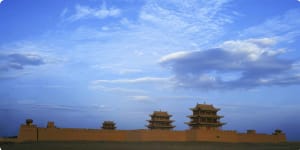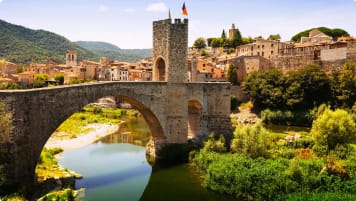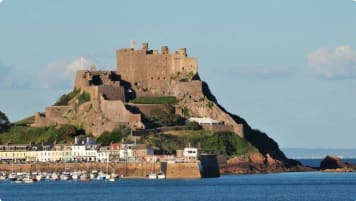Mongolia Small Group Tour | Discover the history and culture of Mongolia
Mongolia is a relatively unexplored country for travellers but it has many diverse landscapes to explore, and interesting cultures to become acquainted with, all existing in a country with few cities and towns but with extensive rural lands that remain the domain of nomadic herders. Small group tour for couples or solo travelers
From $9,418USD
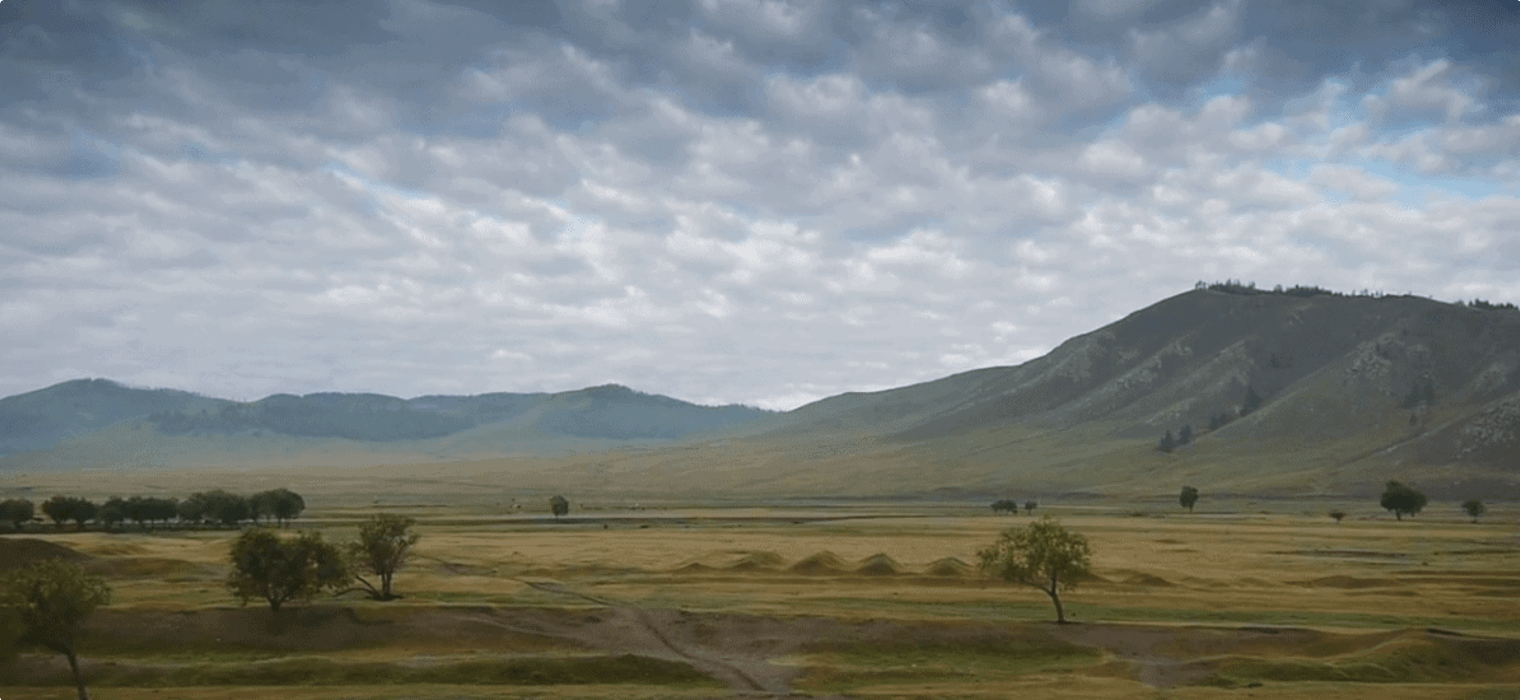
Highlights
- 1. Explore the legendary Flaming Cliffs, where the first dinosaur eggs were discovered.
- 2. Visit the Gandan Monastery (Gandantegchinlen Monastery), the seat of Buddhism in Mongolia.
- 3. Travel to the beautiful Ikh Nart Nature Reserve, where ongoing scientific projects study the argali sheep the Siberian Ibex.
- 4. See the vast Gobi Gurvan Saikhan ("three beauties") National Park of the southern Gobi province.
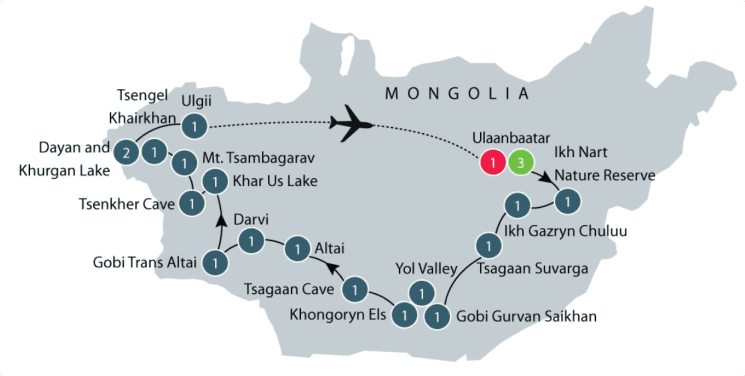
Departure Dates
| Departure Date | Price |
|---|---|
| 01 September 2025 Ends 20 September 2025 • 20 days $9,418 Twin $10,294 Single Available | Selected |
| 31 August 2026 Ends 19 September 2026 • 20 days $9,910 Twin $11,070 Single Available | |
| 30 August 2027 Ends 18 September 2027 • 20 days $10,211 Twin $11,401 Single Available |
Mongolia Small Group Tour | Discover the history and culture of Mongolia
Mongolia, while full of diverse landscapes and interesting cultures, is still relatively unexplored by tourists and travellers. The Mongolia cultural history, is a small group tour for mature-aged and senior travellers, you may be travelling as a couple or solo traveller. What is important is this tour gives you the opportunity to visit and explore this ancient land on Mongolia.
Mongolia has few cities and towns, but has extensive rural lands that remain the domain of nomadic herders. Odyssey Traveller developed this Mongolia small group tour as a new experience for the adventurous. This tour is best suited for active travellers--for those who would like to roam the outdoors, discover the history of this nation, and learn about another culture through visits and conversations with locals.
In this Mongolian small group tour, we travel through the arid desert terrains of the Gobi and the picturesque mountain and lake scenery of the Altai-Mongol Mountain chain.
About Mongolia
Mongolia is a landlocked country, located in north-east Asia. It is sandwiched between Russia to the north and China to the south, and almost touches Kazakhstan to the west. Mongolia is deep in the interior of Asia, far from any sea, leading to a famously extreme continental climate with long cold winters and short cool-to-hot summers.
It is the least densely populated country in the world. The reason why is complex, but it owes a lot to the extreme continental climate mentioned above. Mongolia has very little arable land (or land suitable for growing crops). Three-fourths of the land consists of grassy steppe, which support immense herds of grazing livestock. The rest is divided between forests and barren deserts, with a tiny portion used for agriculture.
The prehistoric people who lived in what is now Mongolia adapted to this environment. While some agriculture was present, the dominant culture of Mongolia was pastoral nomadism. The nomads of Central Asia were the first to domesticate the horse, which they used to herd livestock from steppe to steppe in search of green pastures. In the ancient world, nomads from Mongolia roamed from what is now Romania and Bulgaria in the west to today’s Manchuria (north-eastern China). Yet, unlike agriculture, nomadism could only support small populations, meaning that Mongolia never developed the population densities of nearby China.
Even today, an estimated 25 to 40 percent of people still live as nomadic herders. Much of the sedentary population is urbanised, with the capital Ulaanbaatar comprising around 45% of the nation’s population with a population of 1.3 million.
A cultural and history tour
Only about seven nights of this 20-day program are spent in hotels. In order to immerse ourselves in the Mongolian nomadic lifestyle, many of our nights will be spent in twin-share gers, with shared toilet and bathroom facilities, and in tents furnished with camping equipment. This accommodation assignment permits the program to venture into remote locations where you can enjoy some of the country's best scenery. It also increases the possibility of seeing Mongolian wildlife. All meals are provided during the program. We travel in comfortable 4 x 4 vehicles and, when camping, have an appropriate supply vehicle and accompanied by a cook.
The contrast between ancient traditions and a 21st-century democracy is most visible in Ulaanbaatar, where traditional gers and Buddhist monasteries sit side-by-side with modern high-rises. But few of these contrasts exist once we leave Ulaanbaatar. Mongolia's natural landscape is largely unspoiled and undisturbed; a few families with their livestock and gers dot the land. Our exploratory program will visit a number of these landscapes, from the well-watered north to the arid south.
Itinerary of the Mongolia Small Group Tour
The Mongolia cultural history, small group tours for mature travellers commences with an introduction to the capital, Ulaanbaatar. After the capital, this small group educational tour heads to the forests and lake-land in the central north of Mongolia. Eventually, we end up in the Gobi with its sparse vegetation cover and stony surfaces.
In the Gobi we explore the stunning landscapes inhabited by Bactrian camels, Argali mountain sheep, goitered gazelle, Golden Eagles, Saker Falcons, jerboas (similar to kangaroo rats), and many endemic reptiles.
There will be a variety of activities during this exploration of Mongolia. The tour will visit families, explore ancient cultural relics, take walking tours in a range of forest, grassland, and desert settings, and search for interesting wildlife. Many of these activities involve walking, but each evening we return to the comforts of a ger camp or hotel.
An Odyssey Travel Tour Leader and an English-speaking Mongolian guide will accompany the tour, which is limited to 12 participants.
For more details about the Mongolia cultural history, small group tour for mature travellers , click the ‘Top 5’ or ‘Itinerary’ buttons above! If you’re keen to experience this tour, please call or send an email. Or, to book, simply fill in the form on the right hand side of this page.
Other Tours to Mongolia
This is one of three tours that Odyssey Traveller offers as a holiday or vacation experience for the mature traveller, be they a couple or solo traveller, into Mongolia. Dinosaurs of Mongolia and Mongolia and Russia on the Trans-Siberian Railway are two popular small group tours offered to those seeking a holiday or vacation with a difference.
Articles about Mongolia published by Odyssey Traveller:
For all the articles Odyssey Traveller has published for mature aged and senior travellers, click through on this link.
External articles to assist you on your visit to Mongolia:
- Nadaam Festival – The Three Games of Mongolia.
- From Yaks to Yurts: An Introduction to Mongolian Food.
- The Guardian: Film director Otto Bell on ‘Why I Love Mongolia’.
Odyssey has more information about Mongolia you can research.
Originally published 16 May 2016
Updated 5 February 2020
Gallery
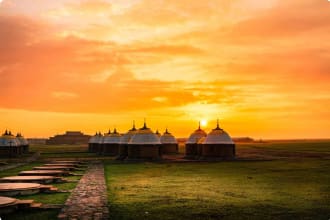
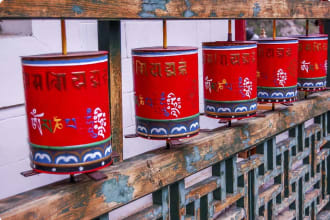
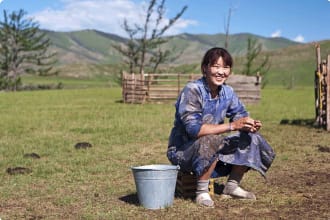
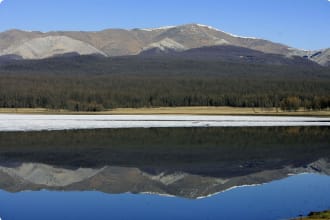
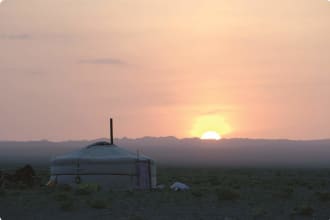
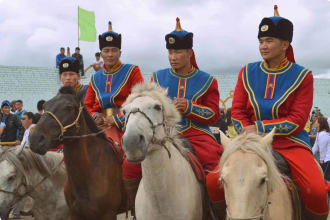
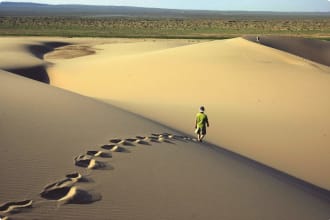
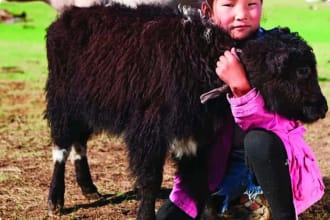

Itinerary
20 days
Day 1: Ulaanbaatar
Accommodation: Hotel Ulaanbaatar or similar.
Upon arrival at the Ulaanbaatar airport, we make our own way to the hotel.
In the afternoon we drive to Zaisan Memorial, built by the Russians to commemorate the fallen soldiers of World War II. This memorial features a painting depicting scenes of friendship between the Soviet people and Mongolia. Situated on one of the hills south of the city, the area provides excellent views of the capital and the surrounding countryside. There is an opportunity to walk higher up the stairs to see the mural itself and get a view of the back of the mountain, overlooking the new district of Zaisan with a backdrop of Bogd Khan National Park.
In the evening, a pre-trip briefing will be provided, followed by a welcome dinner at a local restaurant.
(D)
Day 2: Ulaanbaatar
Accommodation: Hotel Ulaanbaatar or similar.
We begin the day with a visit to Gandan Monastery (Gandantegchinlen Monastery), the seat of Buddhism in Mongolia. The Tibetan name translates to the “Great Place of Complete Joy”. Walking through the monastery grounds, we will hear the low tones of horns used to call the lamas (monks) to the temple and observe their daily rituals, including the reading of sutras, the teachings of the Buddha.
We visit the recently-renovated Chenrezig and Kalachakra Temples, as well as the magnificent statue of Megjid Janraisig, “the lord who looks in every direction.” This statue standing 26.5 metres (about 87 feet), gilded in pure gold and clothed with silk and precious stones, completely fills one of Gandan’s temples.
After lunch we walk through the central square which attracts hundreds of people to take pictures in front of the parliament house and enjoy the sunshine. We walk to the National History Museum for an excellent overview of Mongolia’s history and culture. Here, we visit the dinosaur halls, showcasing the spectacular fossils unearthed in the Gobi.
In the evening, we sample local dishes while dining in a traditional Mongolian restaurant.
(B,L,D)
Day 3: Ulaanbaatar - Ikh Nart Nature Reserve
Accommodation: Ger camp
From Ulaanbaatar we travel to the beautiful Ikh Nart Nature Reserve, located about 300 kilometres southeast from the city in the eastern Gobi grassland region. Consisting of networks of granite rock mountains and hills, this area is a habitat of the elusive wild sheep where scientific research has been taking place recently. Projects taking place in the park are administered by a number of organisations including the Mongolian Academy of Sciences, Denver Zoological Foundation, and the University of Vermont. The projects study the argali sheep the Siberian Ibex. We will have an opportunity to visit these project sites and acquire first-hand knowledge about their behaviour and ecology.
Accommodation will be in a rustic ger camp.
(B, L, D)
Day 4: Ikh Nart - Ikh Gazryn Chuluu
Accommodation: Ger camp
Today, we continue our journey deeper into the Gobi desert and head towards Ikh Gazryn Chuluu Nature Reserve. It is known as one of the most beautiful natural settings with granite rock formations which are unmatched in beauty in the country.
(B,L,D)
Day 5: Ikh Gazryn Chuluu - Tsagaan Suvraga
Accommodation: Ger camp.
Today, we drive through some of the most amazing Gobi terrains, stopping for a picnic lunch at the wonderful Tsagaan Suvraga gorge made out of white sandstone cliffs, from where a fantastic view of the Gobi basin could be seen, with colours ranging from white and yellow to pink and deep red. We will stay overnight at a local ger camp.
(B,L,D)
Day 6: Tsagaan Suvraga - Gobi Gurvan Saikhan
Accommodation: Ger camp.
After an early morning breakfast, we will drive to the great wide basins of the Gobi Gurvan Saikhan (“three beauties”) National Park of the southern Gobi province. We will drive through the valley where the provincial capital Dalanzadgad (“Seventy Springs”) is located. After a refuelling stop there, we will continue driving to our ger camp, where we will be staying for the next two nights.
(B,L,D)
Day 7: Yol Valley and Flaming Cliffs (Gobi Gurvan Saikhan)
Accommodation: Ger camp.
In the morning, we will visit Yol Valley. This is a narrow gorge found within the Gobi Gurvan Saikhan and where, due to lack of direct sunlight, sheets of ice have built up by a small stream which stays frozen until as late as July. Here we will look for the elusive “yol,” or Bearded Vulture.
In the afternoon, we will drive to the legendary Flaming Cliffs, where the first dinosaur eggs the world had ever seen were discovered during the third Central Asiatic Expeditions of the American Museum of Natural History in 1923. (The expedition leader was the energetic Roy Chapman Andrews, who is often thought to have inspired Hollywood’s Indiana Jones character!)
(B,L,D)
Day 8: Hongoryn Els Sand Dunes (Gobi Gurvan Saikhan)
Accommodation: Ger camp.
This morning, we drive to the towering sand dunes of Hongoryn Els (Khongoryn Els), stretching over some 160 kilometres from east to west. After climbing the sand dunes and camel riding, we stay overnight in a ger camp.
(B,L,D)
Day 9: Gobi Gurvan Saikhan - White Cave
Accommodation: Ger camp or local hotel
Turning north on our expedition, we drive north to the Bayandun province of the Bayanhongor province, visiting one of the most significant caves in the country named Tsagaan Agui (White Cave) en-route. The dolomitic limestone solution cavity shapes the narrow, inclining entryway which leads to a rotunda-like main chamber, followed by at least two smaller chambers beyond. It was a dwelling during the Stone Age, and was once a Buddhist pilgrimage site.
(B,L,D)
Day 10: White Cave - Boon Tsagaan Lake
Accommodation: Local hotel
We will steer our wheels to the Altai city, stopping at Bon Tsagaan Lake, a scenic lake at the end of Baidrag Gol (Baidrag River). It is a site for swimming and bird-watching, as the lake is a popular stop for shore birds.
We stay overnight at a local hotel, with time to explore the town market.
(B,L,D)
Day 11: Boon Tsagaan Lake - Darvi
Accommodation: Tent Camp.
We will continue on to the town of Darvi, located some 1,200 kilometres from the capital Ulaanbaatar. If we are lucky, we might have a chance to spot the Saiga antelopes. One of the little-known monuments of the 3rd century BC Hunnu Empire can be found in this area as well. We will travel under the serene view of the majestic Sutai Khairkhan (Sutai Mountain) this afternoon.
(B,L,D)
Day 12: Darvi - Durgin Lake
Accommodation: Tent Camp.
Continuing our journey, we will go to more remote parts of southwestern Mongolia, known as the Gobi – Trans-Altai region. We will have opportunities to visit authentic nomadic families today and enjoy their hospitality.
We will drive to the scenic Durgin Lake, staying in a small encampment set up with a local cooperative of herders. We learn about the projects they are involved in, including the preservation of saiga antelopes and snow leopards.
(B,L,D)
Day 13: Durgin Lake - Blue Caves
Accommodation: Local hotel in Hovd City.
Making a day trip, we will explore one of the Jargalant mountain valleys and visit Mongolia’s best-known cave, the Tsenkher, literally translated as “blue”, and study its famed petroglyphs from the early Stone Age period.
(B,L,D)
Day 14 : Blue Caves - Mount Tsambagarav
Accommodation: Field camp.
We will enter the western-most lands of Mongolia proper and reach the breathtaking Tsambagarav Mountain, one of Mongolia’s landmark peaks. Its green valley is a popular summer camping ground for the local nomads with whom we will meet and spend the night with, singing and hearing their stories.
(B,L,D)
Day 15: Mount Tsambagarav - Tsengel Khairkhan Mountain
Accommodation: Field camp.
We are entering the ethnic Kazakhs land today as we drive to the magnificent Tsengel Khairkhan Mountain – another popular summer camp for local Kazakh nomads. We will visit an eagle hunter family and learn how eagles are trained for hunting.
(B,L,D)
Day 16: Tsengel Khairkhan - Dayan & Hurgan Lakes
Accommodation: Field camp
From Tsengel Khairkhan, we push on to visit some of western Mongolia’s most secluded and beautifully preserved lakes. Located within the Altai Tavan Bogd National Park near the Mongolian border with China are the stunning lakes of Khoton, Hurgan (Khurgan) and Dayan, creating scenery that is both rewarding and humbling.
We will drive to Syrgal to move closer to the Dayan and Hurgan Lakes.
Day 17: Dayan & Hurgan Lakes
Accommodation: Field camp.
We will spend one full day exploring the local sights and sounds and spend the day leisurely. We visit some ancient Turkik stones and petroglyphs of life-size horses.
(B,L,D)
Day 18: Dayan & Hurgan Lakes - Ulgii
Accommodation: Local hotel
We will drive back to the town of Ulgii for our final night in western Mongolia. We will visit a local mosque and the town market.
Day 19: Ulgii - Ulaanbaatar
Accommodation: Hotel Ulaanbaatar or similar.
In the morning, we will transfer to the airport for our flight (around 3 hours) back to Ulaanbaatar.
In the evening, we will enjoy a traditional Mongolian performance, followed by a farewell dinner at a local restaurant.
Day 20: Ulaanbaatar
Our tour ends today after breakfast.
(B)
Includes / Excludes
What’s included in our Tour
- All sightseeing including entrance fees.
- Odyssey Tour Leader for the duration of the tour.
- Internal flight and taxes.
- Visa fees for Australian and New Zealand passport holders.
- Service charges and gratuities.
- Detailed tour information booklet.
- All transportation and transfers.
- Field trips, excursions, and led walks as indicated.
- 20 nights of accommodation in hotels, gers, and tented camps with all meals.
- The tour will be led by professional English-speaking Mongolian guides.
What’s not included in our Tour
- Return economy class international airfare and departure taxes.
- Items of a personal nature such as telephone calls and laundry.
- Comprehensive travel insurance.
Participants must be in excellent health, extremely mobile and live an active lifestyle. Program activities may include up to 6 hours of continuous strenuous, moderate-to-fast paced activities per day on varied terrain.
Book now
Make it a private tour
Easing your journey
Crossing international borders with restrictions
The list of requirements to travel internationally has changed and will continue to change for several years. Odyssey is here to assist you in managing your way through these requirements:
For more information see our Crossing international borders with restrictions page.
Book With Confidence
If less than 30 days before your tour starts you are unable to travel as a result of Government travel restrictions, Odyssey Traveller will assist you with a date change, provide you with a credit or process a refund for your booking less any non-recoverable costs.
See Terms and conditions for details.
Peace of Mind Travel
The safety of our travellers, tour leader, local guide and support staff has always been our top priority and with the new guidelines for public health and safety for keeping safe for destinations around the world, we’ve developed our plan to give you peace of mind when travelling with us.
See Peace of Mind Travel for details.
Reading List Download PDF
Genghis Khan and the Making of the Modern World
Jack Weatherford
The Mongol army led by Genghis Khan subjugated more lands and people in twenty-five years than the Romans did in four hundred. In nearly every country the Mongols conquered, they brought an unprecedented rise in cultural communication, expanded trade, and a blossoming of civilization. Vastly more progressive than his European or Asian counterparts, Genghis Khan abolished torture, granted universal religious freedom, and smashed feudal systems of aristocratic privilege. From the story of his rise through the tribal culture to the explosion of civilization that the Mongol Empire unleashed, this brilliant work of revisionist history is nothing less than the epic story of how the modern world was made.
Eagle Dreams: Searching for Legends in Wild Mongolia
Stephen Bodio
Mongolia is a vast country located between Siberia and China, and little-known to outsiders. As Mongolia had long been under Soviet rule, it was inaccessible to Westerners. That was until 1990, when Stephen J. Bodio began planning his trip.
As a boy, Bodio was always fascinated with nature. When he saw an image in National Geographic of a Kazakh nomad, dressed in a long coat and wearing a fur hat, holding a huge eagle on his fist, his life was changed from then on. When Mongolia became independent in 1990, Bodio knew that his dream to see the eagle hunters from the picture in National Geographic
Bones of the Master: A Journey to Secret Mongolia
George Crane
In 1959 a young monk named Tsung Tsai (Ancestor Wisdom) escapes the Red Army troops that destroy his monastery, and flees alone three thousand miles across a China swept by chaos and famine. Knowing his fellow monks are dead, himself starving and hunted, he is sustained by his mission: to carry on the teachings of his Buddhist meditation master, who was too old to leave with his disciple.
Nearly forty years later Tsung Tsai — now an old master himself — persuades his American neighbor, maverick poet George Crane, to travel with him back to his birthplace at the edge of the Gobi Desert.
They are unlikely companions. Crane seeks freedom, adventure, sensation. Tsung Tsai is determined to find his master's grave and plant the seeds of a spiritual renewal in China. As their search culminates in a torturous climb to a remote mountain cave, it becomes clear that this seemingly quixotic quest may cost both men's lives.
Hearing Birds Fly: A Nomadic Year in Mongolia
Louise Waugh
Louisa Waugh's passionately written account of her time in a remote Mongolian village. Frustrated by the increasingly bland character of the capital city of Ulan Bator, she yearned for the real Mongolia and got the chance when she was summoned by the village head to go to Tsengel far away in the west, near the Kazakh border. Her story transports the reader to the glacial cold and the wonders of the Seven Kings as they steadily emerge from the horizon. Through her we sense their trials as well as their joys, rivalries and even hostilities, many of which the author shared or knew about. Waugh's time in the village was marked by coming to terms with the harshness of climate and also by how she faced up to new feelings towards the treatment of animals, death, solitude and real loneliness, and the constant struggle to censor her reactions as an outsider. Above all, she aims to involve readers with the locals' lives in such a way that we come to know them and care for their fates.
Mongolia: Travels in the Untamed Land
Jasper Becker
For seventy years Mongolia was all but closed to the west - a forbidden country, shrouded in darkness. Jasper Becker had long dreamed of exploring the sweeping land that lay just beyond China’s Great Wall and when communism disintegrated, he finally did. Setting out from Kublai Khan’s capital, Beijing, Becker was one of the first westerners to cross the border. Tracing the course of the Yellow River, he ventured deep into the heart of Mongolia, witnessing the birth of one of the world’s youngest democracies as well as the deep and tragic impact of the rules of Mao and Stalin on the Mongolian people.
Unravelling the history of Mongolia which had for so long been obscured and distorted, Becker traces the rise and fall of the Mongols who emerged from the steppes to forge one of the greatest and most feared empires of all time under Genghis Khan and his successors; he examines the shattering, divisive years of communist rule and explores present-day Mongolia, where poverty and the encroachments of westernisation cause as much damage. He goes in search of the fragile remnants of Buddhism and shamanism; visits Tuva - the lost world of Central Asia - and searches for the tomb of Genghis Khan which has been guarded and hidden by the same family for generations. Listening to the pulse of Central Asian history, Becker adorns his narrative with the stories of past travellers, tyrannical rulers, nomads, monks, missionaries, Russian officials, Mongolian activists and the memories of everyday people to paint a moving and enlightening portrait of Mongolia, a country that against all the odds has survived since the days of Genghis Khan and continues to beat to its own rhythm.
